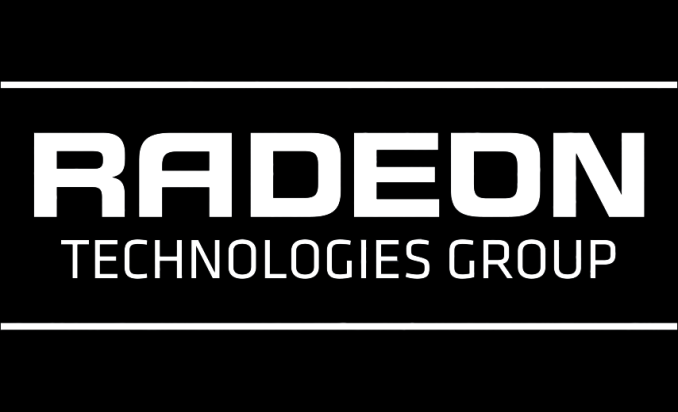AMD Releases Radeon Software Crimson Edition 16.8.1 Hotfix
by Daniel Williams on August 9, 2016 7:00 AM EST
Hardly a week and a half has gone by and AMD has released another driver update. Of course with the flood of newly released cards we have seen released this summer I’m almost surprised driver updates aren’t more common. Along with new cards we get fixes for the Radeon RX 480, Crossfire, and a couple other applications. A Crossfire profile is even thrown in for good measure.
AMD Radeon Software version 16.8.1 brings the driver version to 16.30.2511, continuing the driver branch introduced with RTG’s last update. With this driver update we are brought support for the AMD Radeon RX 470 and RX 460, which both saw release over the past few days.
Of course it’s not an update without a few fixes. The first stop this week is some fixes for the Radeon RX 480. Previously the max memory overclock available to the RX 480 in Radeon WattMan was too low and has now been resolved, and low frame rate and stuttering issues in Wolfenstein: The Old Blood have been amended as well. In Overwatch there were problems with stability in the form of an application crash when playing on an RX 480 setup with Crossfire enabled. Continuing with Crossfire, DOTA2 was struggling with lower than expected performance while The Division experienced poor Crossfire scaling in some low resolution configurations.
Following through with the other fixes Firefox should no longer experience an application crash when hardware acceleration is enabled for content playback, and Radeon Settings should now report the correct Vulkan API version number. To finish off the fixed issues, updating drivers through Radeon Settings should go smoother now with a fix for Radeon Settings failing previously with an error message. Along with support for new cards and a list of fixes, AMD also gave us a Crossfire profile for Codemasters F1 2016.
As always, those interested in reading more or installing the updated hotfix drivers for AMD’s desktop, mobile, and integrated GPUs can find them either under the driver update section in Radeon Settings or on AMDs Radeon Software Crimson Edition download page.
Source: AMD










11 Comments
View All Comments
powerarmour - Tuesday, August 9, 2016 - link
Yes yes, now about that full Polaris review...silverblue - Tuesday, August 9, 2016 - link
Ryan said last Friday that the deep-dive will follow the reviews for the 470 and 460.Dr. Swag - Tuesday, August 9, 2016 - link
I asked him here: http://www.anandtech.com/comments/10540/the-geforc... and he said it'd come after the 470 and 460. Not sure if he meant release or review; I think he meant release, and it's possible he'll do a 480+470+460+Polaris deep dive in one article.Dr. Swag - Tuesday, August 9, 2016 - link
P.S. If you want a direct answer from him ask him on Twitter. He should respond if you ask him there.prime2515103 - Tuesday, August 9, 2016 - link
That Firefox issue... Very strange, but, I never had an application crash--it was the driver that crashed (but with no message about it; it just kept resetting) and it would happen with or without hardware acceleration enabled. It also wasn't exclusive to Firefox, the crash happened with IE and Edge as well.I had this problem with every driver released after v15.12. It is now fixed.
This is on a 7970 3GB card.
prime2515103 - Tuesday, August 9, 2016 - link
P.S. That problem applied to both Win7 and Win10 (both 64-bit).Omoronovo - Tuesday, August 9, 2016 - link
This is an issue with certain rendering paths on WDDM driver stacks. Modern GPU's will often not need to directly update Windows on the status of a rendering task, but unfortunately Windows has a default timeout of only 2 seconds before it assumes the gpu has hung and resets the display driver - you'll see lots of scary "Windows - Hardware error" messages in Reliability Monitor when this happens.The fix is to change the default timeout to something more reasonable - nVidia recommends 10 seconds, I'm not sure what AMD recommends but 10 seconds seems to be a good ballpark for it.
nVidia: http://http.developer.nvidia.com/NsightVisualStudi... (nVidia debugging guide)
Microsoft: https://msdn.microsoft.com/en-us/library/windows/h... (discussion of tdr and the registry entries that need modified to alleviate this).
prime2515103 - Tuesday, August 9, 2016 - link
Good info there! I'll keep this in mind if the problem returns with future drivers.iamkyle - Wednesday, August 10, 2016 - link
Nothing in this article regarding Windows 10. Those reg keys don't exist...unless I'm supposed to create them?Omoronovo - Friday, August 12, 2016 - link
Yes, the default is 2 seconds by default or if the key doesn't exist. It's created if you install certain GPGPU debugging utilities. Create the key and set it to the (decimal) value in seconds you wish the timeout to be. I'd recommend not going much past 10 seconds, since if the gpu has actually hung it'll increase the time to recover.